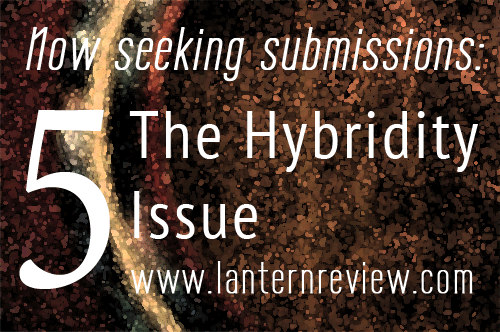
Today’s prompt is more of a loose, outline sketch than a focused discussion. We’re still continuing our exploration of different modes of “hybridity,” but in thinking of examples of pieces that mix media and “collage” voices from outside sources together, I found that it was difficult to choose just one or two poems that felt truly representative. There is so much being done in terms of mixed media today, and so many, many different ways that people have found to do it.
Hence, the following list of resources loosely illustrates a few examples of the two particular modes of hybridity I’m focusing on today: 1) hybrid means of presenting poetry to the viewer (in which the artist employs media outside the realm of the traditional printed page, or combines two or more different media as the means by which to enact their finished piece), and 2) the use of multiple sources (texts, images, video clips, sounds, etc.) to create a hybrid, “collaged” effect (in which the artist may “borrow” text from multiple different sources and mix it with his/her own speaker’s voice). In many cases, the examples I’ve listed do both.
* * *
1. Monica Ong’s visual poem from LR issue 3, “Corona Mestiza,” which overlays text upon the found images of a map and a brain scan in order to convey a family narrative of physical and geographical loss. (See Monica’s web site for more examples of her work, which often combines archival and original images with text, physical objects, sound, and reader/audience interaction).
2. Visual Poems by Gregory and Trisha Orr (from Rattle #29): the poet and his wife, a painter, collaborated on these pieces, combining text with color and visually-textured hand-lettering to form striking works of visual art. The rest of the issue is also full of interesting visual poems that can be used for inspiration.
3. Margaret Rhee’s “Materials” from LR Issue 4, which makes use of scrolling, vertical columns and strategic typography, and combines text and voices from multiple sources.
4. Charles Hobson’s beautifully composed and choreographed video accounting of the making of his artist’s book for Eavan Boland’s poem “Quarantine” (from Drunken Boat 15). The video is as much part of the mode of his art as the book and the borrowed text itself. As with the Rattle issue mentioned above, the rest of the “Handmade/Homemade” folio that features Hobson’s film is worth exploring, too. A tip for submitting to LR: if you are planning on sending in work that uses the full text of another person’s poem, please be sure to obtain their explicit permission before doing so (otherwise, we cannot publish your piece, even if it is accepted).
5. Mouseover translations on Action Yes: admittedly, this is more of a brilliant editorial intervention than anything else, but it so perfectly illustrates the possibilities for mixed media made available by the web that I couldn’t not include it. Here’s one great example: “from strips, attempts, games,” by Rémi Froger, translated by François Luong (mouse over the English to reveal the original French).
6. The work of Theresa Hak Kyung Cha, best known for her book Dictee, whose written and performed art sought to problematized the acts of speaking and writing in English (the loss of a heart language, the simultaneous stifling of a history by mainstream narratives) through explorations that made use of anatomical diagrams, archival photographs, poem-text (both self-generated and “borrowed” from sources like French dictation exercises), textiles, musical instruments, video footage, the performances of physical acts of creation and erasure, and more. Extensive digital documentation of her work is no longer readily available online, but this New York Times tribute describes several of her important pieces quite well.
* * *
Why mixed media? Why collage? Because the results of both can be absolutely startling. The dimensions of unfamiliarity and innovation that can emerge from the overlaying of the poem with non-print media, digital platforms, unique performative experiences, or text that comes from outside the characteristic syntax or lived experiences of the poet him or herself, can cause the reader to look again, to examine the text from a different perspective, and to encounter the poem in new and refreshingly counter intuitive ways.
Prompt: Create a poem or poetic work that presents itself to the reader through a mixture of two or more different types of media, and/or which collages together materials gathered from multiple different sources (texts, images, poems, sound clips, found objects, etc.).
* * *
The submissions period for Issue 5, “The Hybridity Issue,” will close on July 15th. Has this prompt inspired you to experiment with mixed media poetics, or do you have other previously unpublished work that explores the concept of “hybridity”? Click here to submit.